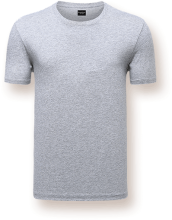Modal fiber is a new generation of cellulose fiber with high wet modulus developed by Lenzing Company in Austria, which uses European beech wood as pulp. It not only has the hygroscopicity of natural fibers, but also has the strong elongation of synthetic fibers. The production and processing process of modal fibers is clean and non-toxic. The waste of its textiles can be biodegraded naturally, and has good environmental protection performance. It is called green fiber. The green modal stretch fabric currently on the market is a new type of fabric made of composite yarn spun from the new Lycra A fiber produced by DuPont of the United States as the yarn core, and modal fiber is used as the covering layer on the outside of Lycra A. It can not only give full play to the good elasticity of Lycra fiber, but also show the smooth and bright characteristics of modal fiber with excellent hygroscopicity, giving people a sense of elegance and luxury, which is a new generation of green textiles.
Modal fiber has the characteristics of high dry and wet strength, low wet elongation and high dry film content.
The performance is as follows:
Modal Fiber | Ordinary Viscose Fiber | |
Fineness(dtex) | 1.3 | 1.67 |
Length(mm) | 38 | 38 |
Dry strength (CN/dtex) | 3.2~3.4 | 2.3~2.7 |
Wet strength (CN/dtex) | 2.1~2.4 | 1.0~1.5 |
Dry elongation (%) | 12~14 | 18~20 |
Wet elongation (%) | 13~15 | 21~23 |
Public moisture regain (%) | 13 | 13 |
Actual moisture regain(%) | 10~11 | 12~13 |
Dry film volume(CN/dtex) | 78.2 | 29~68 |
ModalFRESH (New Modal) fiber is a new functional cellulose fiber developed by Lenzing Company in Austria. To be precise, it is a modal fiber containing antibacterial agents. Its spinning process is the same as that of ordinary Modal fiber, the difference is that ModalFresh fiber for modal undershirts adds an antibacterial agent to the spinning solution that is used in commercial products such as soap, cosmetics and toiletry products, It effectively inhibits common bacteria on the skin. Lenzing Company has tested ModalFresh fiber in terms of environmental protection and physiology according to ISO standards and successfully passed the Oeko-Tex Standard 100 ecological textile class I standard. This fiber can be widely used in the processing of professional shirts, sportswear, underwear, T-shirts, pajamas and other products.

Modal fabrics are pure spinning, mo/cotton, mo/polyester blended with linen and cotton, and modal fabrics have the following style characteristics:
The appearance and feel of the fabric are smooth, delicate and soft, and the fabric has a mercerized feel.
Modal's high wet modulus increases the dimensional stability of the product.
The fabric has good garment effect, and has natural wrinkle resistance and non-ironing properties.
Modal and cotton blended, the fabric has good water absorption and air permeability.
(1) The winding and warping process adopts automatic warp winding machine, metal grooved cylinder, equipped with electric cleaner and air splicer to realize no knot yarn, the warping is done with uniform tension, the warp beam is smooth, and the cylinder is changed collectively.
(2) Size selection of the modal fabric panties or other clothing and sizing Modal fiber is a new generation of cellulose fiber containing a large amount of hydrophilic hydroxyl groups. Therefore, modified starch should be used as the main size, and PVA and acrylic pulp should be used for high-count yarns. The volume specific resistance is high, and it is easy to generate static electricity. Therefore, a small amount of antistatic agent and smoothing agent need to be added to the size formula to make the hairiness fitting yarn flexible and wear-resistant. According to the characteristics of modal fiber's strong hygroscopicity (50% higher than that of cotton), large wet elongation, and large plastic deformation of the yarn, the sizing process should adopt light pressure and elongation to strictly control the tension of each area, and use light tension to maintain elasticity. The immersion roller of the size tank should be properly raised to reduce the elongation in the wet zone. The sizing elongation of 100% modal should be controlled at about 3%, and the sizing temperature should be controlled at 85°C to 90°C.